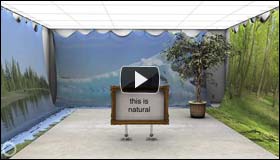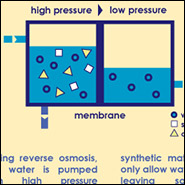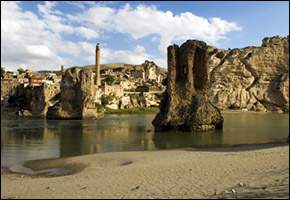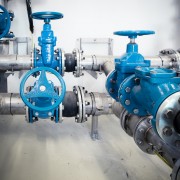Aspen Design Challenge: Designing Water’s Future
Students to develop solutions to global water crisis in first annual “Aspen Design Challenge”
AIGA, Circle of Blue and INDEX launch “Designing Water’s Future,”
Engaging Cross-Disciplinary Teams of Next-Generation Thinkers Around the World
NEW YORK, NY. – August 18, 2008 – AIGA, the professional association for design, today issued an ambitious call to the next generation of creative thinkers in its first annual Aspen Challenge, “Designing Water’s Future.” In association with INDEX: and Circle of Blue, the international contest challenges cross-disciplinary student teams to develop design solutions that explore new ways of understanding and responding to the global water crisis.
The Aspen Design Challenge is a joint project developed by AIGA and INDEX:, a global nonprofit design network, to engage the millennial generation in solving global issues. The challenge is issued as part of the Aspen Design Summit, an international conference organized for leaders from business, the public sector and nonprofit organizations.
Creative design can change the way people think and behave.
“Creative design can change the way people think and behave,” said Richard Grefé, executive director of AIGA. “We have every confidence that the students who participate in the Aspen Design Challenge will devise the types of solutions we need—inventive, simple, powerful and actionable.”
The rules and guidelines for the challenge were distributed to thousands of faculty and students at more than 250 universities from Beijing to Boston, and are available to all with the launch of the Aspen Design Challenge website.
Water crisis
More than five million people die each year due to a lack of safe drinking water, and the UN estimates that 5.5 billion people will lack adequate access to freshwater in the next 20 years. Water scarcity has emerged as a serious threat to peoples across the world. Called “the new oil” for the 21st century, water affects everything.
The global water crisis is a universally threatening and immensely complex problem.
“The global water crisis is a universally threatening and immensely complex problem,” said J. Carl Ganter, director and co-founder of Circle of Blue, the international network of leading journalists, scientists and communications designers that reports and presents the information necessary to respond to the global freshwater crisis. “The causes are many — climate change, population growth, over-use — and the ramifications are felt in all areas from environment to security to economic development. This is where we need design students to step in. Design is the intermediary between information and understanding. Students will have the fresh perspective we need.”
About the Challenge
Details of “Designing Water’s Future” were previewed by Brian Collins, one of the originators of the program and chairman of COLLINS:, the New York-based transformation design firm, during a commencement speech he delivered Saturday at the Art Center College of Design in Pasadena.
The initiative grew out of session led by Collins and Ganter during the January 2008 World Economic Forum conference in Davos, Switzerland. In that discussion, global thought leaders concluded:
- In an era of information overload, indifference and fragmenting audiences, gaining attention for the water crisis presents a communications design challenge of urgent immensity.
- We currently lack the stories, presentations and communications to make the water crisis understandable for leaders, policy makers and citizens to take immediate action.
- Powerful new communication design solutions, using new tools and technologies, are needed to engage and inform international audiences across the political and economic spectrum.
Designers can inspire audiences to take action and inform people who may be separated by geography, education or immediate need.
“The water crisis needs creativity and care—and it needs it now,” Collins said. “Designers can inspire audiences to take action and inform people who may be separated by geography, education or immediate need. Our goal is to enlist a new generation of design thinkers to find smarter ways to communicate this problem, and drive local action and solutions.”
Students and faculty from around the world will develop ideas this fall and submit proposals by December 2008. Already there are commitments from schools in Australia, China, Denmark, Qatar and the United States. An international jury of accomplished leaders in the design and environmental fields will select contest finalists in February 2009.
Students behind the finalist proposals will have the opportunity to workshop their ideas in Aspen, improving their concepts with feedback from top designers, scientists, journalists and business and NGO leaders. The student projects will be presented at significant international forums such as the United Nations Climate Change Conference in Copenhagen in December 2009. The most promising project will receive The INDEX:|AIGA Aspen Design Challenge Prize in August in Copenhagen.
There are no restrictions on the type of solutions that students may submit. Print design, web applications, environment design, physical devices, data presentation tools and other approaches are all encouraged, as are proposals for the conceptual framework or method of dissemination that may propel these designs into public consciousness. Design students are encouraged to lead cross-disciplinary teams of engineers, artists, ethnographers, anthropologists and scientists, and to consider the social, cultural and scientific significance of water.
For more information on the initiative and its developments throughout the fall, visit: www.aspendesignchallenge.org.
“Designing Water’s Future” Partners




Video interviews of Mr. Grefe, Mr. Collins and Mr. Ganter are online with high-resolution available to the media.
At a glance
THE PROBLEM
Water is the axis issue that intersects the world’s challenges. From health, poverty and security to climate, energy, immigration and environment—even financial and commodities markets are affected. We’re just beginning to grasp the scope of the challenges and their intersection points. Many solutions exist, yet policy makers and the public must first be aware of the complexities and then be called to act, from implementing water management measures in Las Vegas to bringing safe water to rural Africa.
The water saga is complex and requires a 360-degree, multidimensional design approach that includes powerful, fact-based, relevant narratives, accessible information and coordinated channels for action.
Globally, the United Nations estimates that two-thirds of the world’s population will live in areas of water stress within the next 20 years, and that five million people—mostly children—die each year due to contaminated drinking water.
In the developing world, solutions may mean drilling wells for children in a Ghanaian village or applying new or traditional filtering technologies for families in Bangladesh. In the developed world, drought, climate, pollution, agricultural misuse and failing infrastructures beleaguer even the most advanced civilizations.
BACKGROUND
- The global water crisis presents a communications design challenge of urgent immensity.
- Current public understanding about the use and management of water (especially in developed countries) is narrowly defined by outmoded experiences and assumptions.
- Powerful, fact-based narratives are needed to engage and inform diverse, international audiences of varying demographics and geographies.
- The water crisis needs a visual identity, a mantra, new mythologies and stories carried by innovative vehicles to inform and inspire audiences that may be separated by demographics, education and immediate need.
- We currently lack the full scope of raw field data and the presentation tools needed to make it understandable and actionable for policy makers and solutions.
- The crisis may be complex in its global implications, but the solutions are “local, local, local.”
The Challenge
WHO IS ELIGIBLE TO PARTICIPATE
Teams of students, working collaboratively with others of different disciplines, are eligible to participate. It is expected, but not required, that teams will be led by a faculty member or tutor.
SUBMISSION REQUIREMENTS
- An online entry system will be available October 1, 2008
- Statement of creative strategy providing an explanation of your idea and overall thinking (maximum of 500 words)
- Up to 10 images depicting the actual project or explaining the thought process behind your concept
- A comprehensive detailed description of the proposed project and any accompanying research
- Optional: 2–4 minute video introducing your project and describing your idea as well as your background(s)
SCHEDULE
- October 1, 2008: Projects may be submitted online
- December 15, 2008: Deadline for entries
- February 2009: Finalists announced
- February–April 2009: Finalists develop polished presentations
- Late March 2009: Finalists attend the Aspen Environment Forum and pitch to designers, scientists, journalists, business and NGO leaders
- August 2009: Finalists will be invited to Copenhagen for a collaborative workshop in connection with the INDEX: Award 2009
- October 2009: Selected projects will be published
- November–December 2009: A select number of projects will be presented to participants of the World Summit on Climate Change in Copenhagen
For more information please contact:
J. Carl Ganter
Circle of Blue
+1.844.324-7253
circleofblue.org
Kristen Titus
Resnicow-Schroeder for AIGA
212.671-5173
212.671-5169
www.aiga.org
Steve Rogenstein
AIGA
212.710-3121
Niels Jarler
INDEX: Design to Improve Life
+45 2011 3806
Brian Collins
Collins:
212.763-4680
J. Carl Ganter is co-founder and managing director of Circle of Blue. He is a journalist and photojournalist, recipient of the Rockefeller Foundation Centennial Innovation Award, and an Explorers Club Fellow.













Congratulations from Australia to the finalists